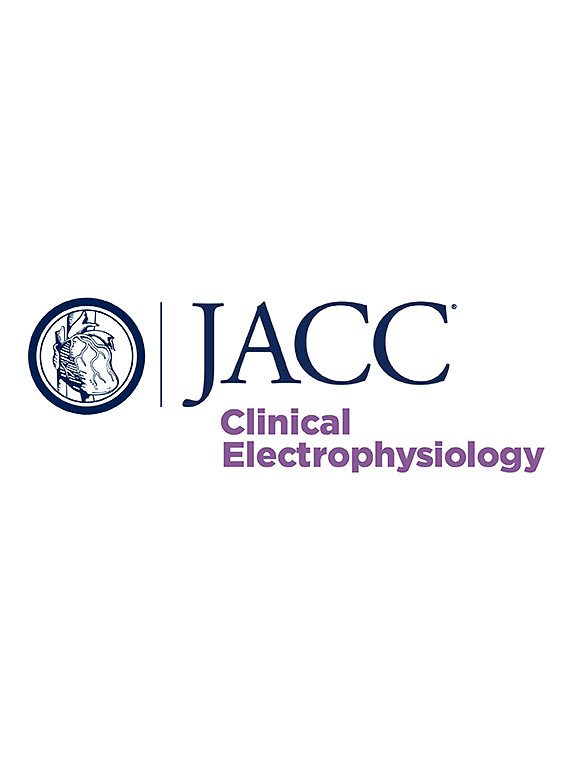Transcriptomic Profiling of Human Myocardium at Sudden Death to Define Vulnerable Substrate for Lethal Arrhythmias
IF 8
1区 医学
Q1 CARDIAC & CARDIOVASCULAR SYSTEMS
引用次数: 0
Abstract
Background
While some chronic pathological substrates for sudden cardiac death (SCD) are well known (eg, coronary artery disease and left ventricular [LV] dysfunction), the acute vulnerable myocardial state predisposing to fatal arrhythmia remains a critical barrier to near-term SCD prevention.
Objectives
This study sought to define the distinct myocardial transcriptomic profile of autopsy-defined arrhythmic sudden deaths, compared to nonarrhythmic sudden deaths and trauma deaths, to determine the acute vulnerable state in the hours to days before SCD.
Methods
We used autopsy to adjudicate arrhythmic from nonarrhythmic causes in 1,265 sudden deaths in San Francisco County from 2011 to 2018. We performed a degradation-tolerant transcriptomic evaluation of LVs sampled at the time of SCD from 245 consented cases using a curated panel of 448 gene probes with known or hypothesized association with SCD.
Results
The targeted transcriptome of arrhythmic (n = 129) vs nonarrhythmic (n = 90 nonarrhythmic sudden deaths + 26 trauma deaths) LV samples revealed 31 differentially up-regulated and 36 down-regulated genes (adjusted P < 0.05) related to the collagen-containing extracellular matrix (up-regulation of FAP, FMOD, and LTBP2), regulation of ion transport (up-regulation of KCNA5 and KCNN3 and down-regulation of KCNJ8, KCNK1, and KCNJ5), and contraction (down-regulation of MYH6). Fibrosis-related genes showed the highest magnitude increased expression in arrhythmic vs nonarrhythmic deaths and vs published transcriptomes from end-stage heart failure. After molecular stratification by known markers for mature (COL1A1, COL1A2, COL3A1) and active (POSTN, MEOX1) fibrosis, cases with the highest expression of both had the largest proportion of arrhythmic cause of death (n = 27 of 36 [75%]) vs cases with low expression of both markers (n = 87 of 181 [38%]) (P = 0.006) or vs mature only (n = 10 of 14 [71%]) or active only (n = 5 of 14 [36%]). Activated fibroblast gene expression signature was enriched in arrhythmic female vs arrhythmic male cases, among other sex-specific differences in ion-channel and myosin (up-regulation of SCN4B, SCN8A, and KCNAB1 in females and KCNJ4 and MYH7B in males) expression.
Conclusions
RNA profiling of the myocardium at SCD identifies active fibrosis, undetectable by conventional clinical methods, in the presence of fixed scar and selected ion-channel dysregulation (more pronounced among female cases) as an acute vulnerable substrate for fatal arrhythmias. These findings may represent novel directions to identify patients at elevated near-term risk for SCD and critical pathways for intervention to reduce acute lethal arrhythmias.
猝死时人类心肌的转录组分析,确定致命性心律失常的易感基质。
背景:虽然心脏性猝死(SCD)的一些慢性病理基质已众所周知(如冠状动脉疾病和左心室功能障碍),但易导致致命性心律失常的急性脆弱心肌状态仍是近期预防 SCD 的关键障碍:本研究旨在确定尸检定义的心律失常性猝死与非心律失常性猝死和外伤性猝死的心肌转录组特征,以确定 SCD 发生前数小时至数天内的急性心肌脆弱状态:2011年至2018年,我们利用尸检对旧金山县1265例猝死中的心律失常与非心律失常原因进行了判定。我们使用一个由 448 个已知或假定与 SCD 有关的基因探针组成的编辑面板,对 245 例经同意的病例在 SCD 发生时采样的左心室进行了耐降解转录组学评估:结果:心律失常(n = 129)与非心律失常(n = 90 非心律失常猝死 + 26 创伤死亡)左心室样本的靶向转录组显示了 31 个不同的上调基因和 36 个下调基因(调整后 P < 0.05),这些基因与含胶原的细胞外基质(FAP、FMOD 和 LTBP2 的上调)、离子转运调节(KCNA5 和 KCNN3 的上调以及 KCNJ8、KCNK1 和 KCNJ5 的下调)和收缩(MYH6 的下调)有关。在心律失常死亡与非心律失常死亡以及与已发表的终末期心力衰竭转录组相比,纤维化相关基因的表达量增加幅度最大。根据成熟(COL1A1、COL1A2、COL3A1)和活跃(POSTN、MEOX1)纤维化的已知标记进行分子分层后,两种标记表达量最高的病例与两种标记表达量较低的病例(181 例中有 87 例[38%])(P = 0.006)或仅与成熟(14 例中有 10 例[71%])或仅与活跃(14 例中有 5 例[36%])病例相比,心律失常死因比例最高(36 例中有 27 例[75%])。激活的成纤维细胞基因表达特征在心律失常女性病例与心律失常男性病例中富集,在离子通道和肌球蛋白(女性中 SCN4B、SCN8A 和 KCNAB1 上调,男性中 KCNJ4 和 MYH7B 上调)表达方面存在其他性别特异性差异:SCD心肌的RNA图谱分析发现,在存在固定瘢痕和选择性离子通道失调(在女性病例中更为明显)的情况下,存在传统临床方法无法检测到的活性纤维化,这是致命性心律失常的急性脆弱基质。这些发现可能代表了识别近期 SCD 风险升高患者的新方向,以及减少急性致死性心律失常的关键干预途径。
本文章由计算机程序翻译,如有差异,请以英文原文为准。
求助全文
约1分钟内获得全文
求助全文
来源期刊

JACC. Clinical electrophysiology
CARDIAC & CARDIOVASCULAR SYSTEMS-
CiteScore
10.30
自引率
5.70%
发文量
250
期刊介绍:
JACC: Clinical Electrophysiology is one of a family of specialist journals launched by the renowned Journal of the American College of Cardiology (JACC). It encompasses all aspects of the epidemiology, pathogenesis, diagnosis and treatment of cardiac arrhythmias. Submissions of original research and state-of-the-art reviews from cardiology, cardiovascular surgery, neurology, outcomes research, and related fields are encouraged. Experimental and preclinical work that directly relates to diagnostic or therapeutic interventions are also encouraged. In general, case reports will not be considered for publication.
 求助内容:
求助内容: 应助结果提醒方式:
应助结果提醒方式:


